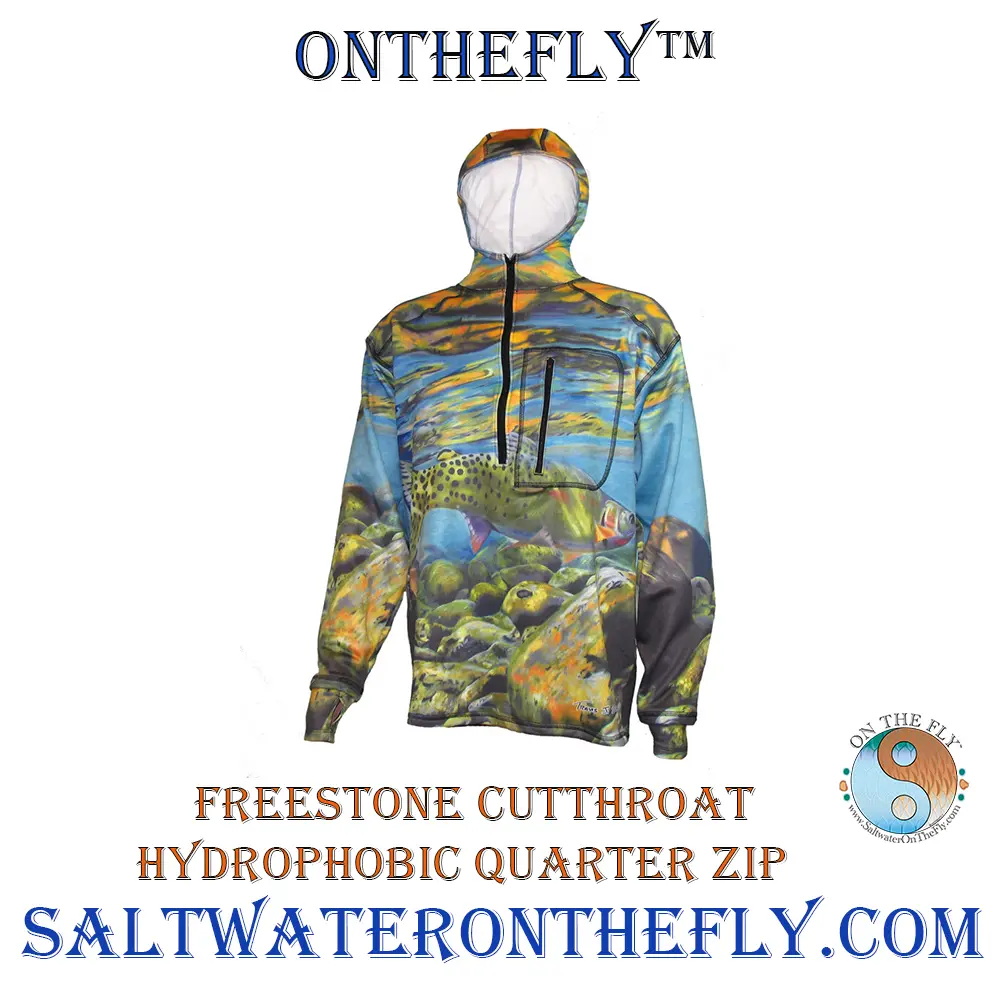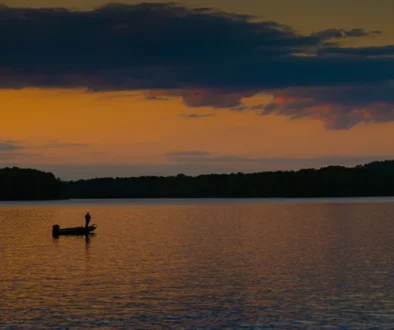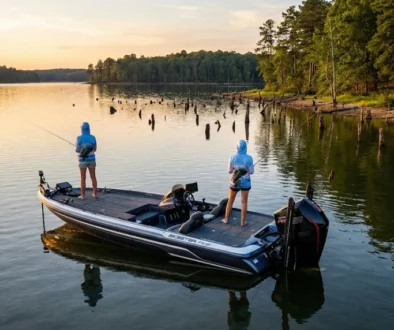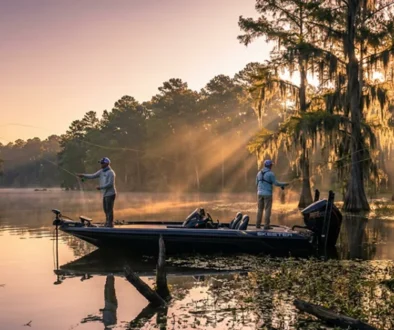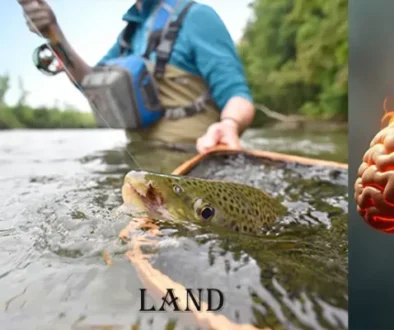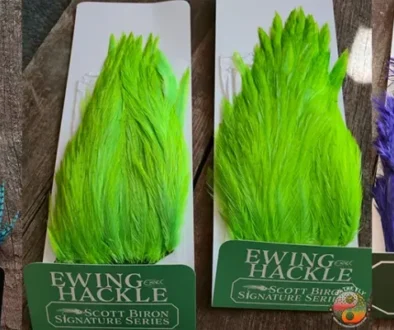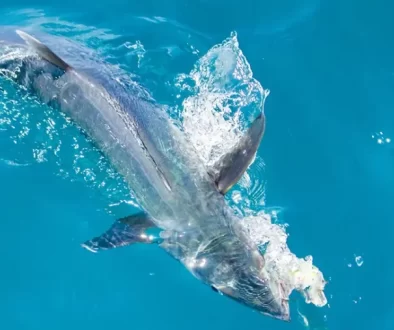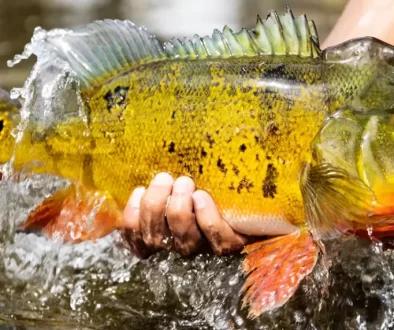DIY Minnesota Fly Fishing: Bass, Trout, Pike, Muskie
Minnesota’s waterways are a paradise for anglers seeking the thrill of DIY Minnesota Fly Fishing bass trout pike muskie. This guide cuts straight to the chase, offering practical advice on gear selection, prime fishing spots, and understanding fish behavior in local waters. You’ll learn how to craft effective flies that mimic natural prey and navigate Minnesota’s diverse fishing regulations. Whether you’re aiming for the largemouth bass in serene lakes or hunting muskies in moving waters, we’ve got you covered with techniques that work best across seasons.
Diving into the heart of Minnesota’s fly fishing secrets, this piece offers a treasure trove of advice on mastering various aquatic terrains and ensuring your equipment stands the test of time, setting you up for an enriched angling journey. Embarking on your upcoming fishing journey, we’ll navigate towards ensuring it’s both fruitful and eco-friendly.
Table Of Contents:
- Essential Gear for Minnesota Fly Fishing
- Top DIY Fly Fishing Spots in Minnesota
- Understanding Fish Behavior in Minnesota Waters
- Crafting Effective Flies for Minnesota Species
- Navigating Fishing Regulations in Minnesota
- Fishing Techniques That Work Best in Minnesota Waters
- The Role of Weather Patterns on Fishing Success
- Tackling Different Water Bodies Across Seasons
- Getting Started with Fly Fishing In Twin Cities
- Maintaining Your Gear For Longevity
- FAQs in Relation to DIY Minnesota Fly Fishing Bass Trout Pike Muskie
- Conclusion of Minnesota Fly Fishing
- From Muskie to Trophy Brook Trout
Essential Gear for Minnesota Fly Fishing
Choosing Your Fly Rod and Reel
Fishing in Minnesota is like trying to pick the best ice cream flavor at a parlor with endless options. You need gear that’s versatile enough to handle bass, trout, pike, and muskie without breaking a sweat—or your bank. For most anglers targeting these feisty game fish, a 9′ 8wt fly rod for pike, 9′ 10wt saltwater fly rod for muskie hits the sweet spot. It’s long enough to cast over weed masses yet has enough backbone for when that trophy muskie decides it’s not going down without a fight. Favorite trout fly rod is a 9′ 6 weight fly rod, this can also be used for bass fly fishing.
Picking the right reel isn’t just about looks—it’s about survival out there among the boundary waters and mighty Mississippi River tributaries. A 6 weight large arbor fly reels –10 weight large arbor fly reels keeps you prepared for whatever takes your fly. Its quick retrieval rate can be crucial during those intense moments of tug-of-war with Northern Minnesota’s finest muskies.
The Right Fly Line and Tippet Selection
If fishing were dancing, then choosing your fly line would be akin to selecting the perfect dance shoes—you need something suited for where you’re stepping. In Minnesota’s diverse waters—from shallow streams in Driftless Area to deep lakes in Boundary Waters Canoe Area—matching your line is key. Weight forward floating fly lines and with sink tips or fluorocarbon tippet and leaders tackle deeper water hunts effectively by getting flies down where target species lurk during different seasons.
Talking tippets: they’re like secret agents connecting flies to lines discreetly but strongly. With toothy critters such as pike lurking beneath surfaces or heavy hitters like largemouth bass bursting through weed beds, using heavier tippets (10-30lb) ensures that epic battle ends in your favor rather than heartbreak.
Top DIY Fly Fishing Spots in Minnesota
Exploring the Driftless Area
If you’re looking for a fly fishing adventure that feels like stepping into a secret garden only known to those with waders and a rod, southeastern Minnesota’s Driftless Area is your spot. With over 5,000 lakes and 15,000 miles of streams and rivers crisscrossing the state, places like the Root River stand out for their trout population while the mighty Mississippi River lays claim to an impressive variety of fish species including bass species, pike species, and even walleye.
In this area, the pristine terrains offer not only breathtaking vistas but also present distinct hurdles. For instance, navigating through its dense weed mass requires skill but rewards anglers with spectacular catches. The clear waters here let polarized sunglasses double as x-ray specs revealing game fish lurking below.
The allure of these locations lies in the ease with which one can embark on self-guided expeditions. Whether you’re setting off from a county road or paddling into boundary waters canoe area wildernesses such as Vermillion River or Whitewater River – every cast feels like throwing darts blindfolded at Mother Nature’s favorite bar hangout; thrilling yet rewarding when you hit that bullseye catch.
Fly Fishing Techniques That Work Best in Minnesota Waters
Moving water areas require finesse; knowing how to read currents can turn an otherwise frustrating day into one filled with fighting fish tales worthy of any campfire story session. Techniques vary greatly depending on your target species: largemouth bass might be coaxed out from under log jams using surface flies whereas deeper water inhabitants such as lake trout may necessitate sinking lines to get down where they hide during midday sun.
In contrast static waters – think small ponds scattered across northern Wisconsin all way up through metro areas surrounding Twin Cities – call for strategies focusing on structure edges where drop-offs meet flat expanses providing ambush points both predators prey frequent throughout seasons changing moods daily weather patterns dictate activity levels dramatically affecting success rates anyone casting line hopes bring home dinner rather than just stories about one got away again.
Navigating fishing regulations in Minnesota before heading out ensures that your experience remains sustainable both for local ecosystems and future generations of anglers alike ensuring each trip not only respects natural resources but enriches our understanding connection world around us through lens fly fishing culture deeply rooted state’s history heritage.
Step into the Driftless Area for a fly fishing journey where every cast is an adventure. With over 5,000 lakes and streams including the Root and Mississippi Rivers, get ready to navigate through lush landscapes for bass, trout, pike, and more. Master moving water techniques or explore static waters’ edges for that perfect catch. And remember, respecting Minnesota’s rich fishing regulations keeps our adventures sustainable.
Understanding Fish Behavior in Minnesota Waters
Seasonal Movements of Game Fish
Fish behavior can seem as unpredictable as a coin toss, but seasoned anglers know that patterns emerge with the seasons. In the shallower waters during spring, bass species and pike make their appearance, seeking warmth and food after a long winter. As summer heats up, these game fish retreat to deeper water or find solace among dense weed beds to escape the heat.
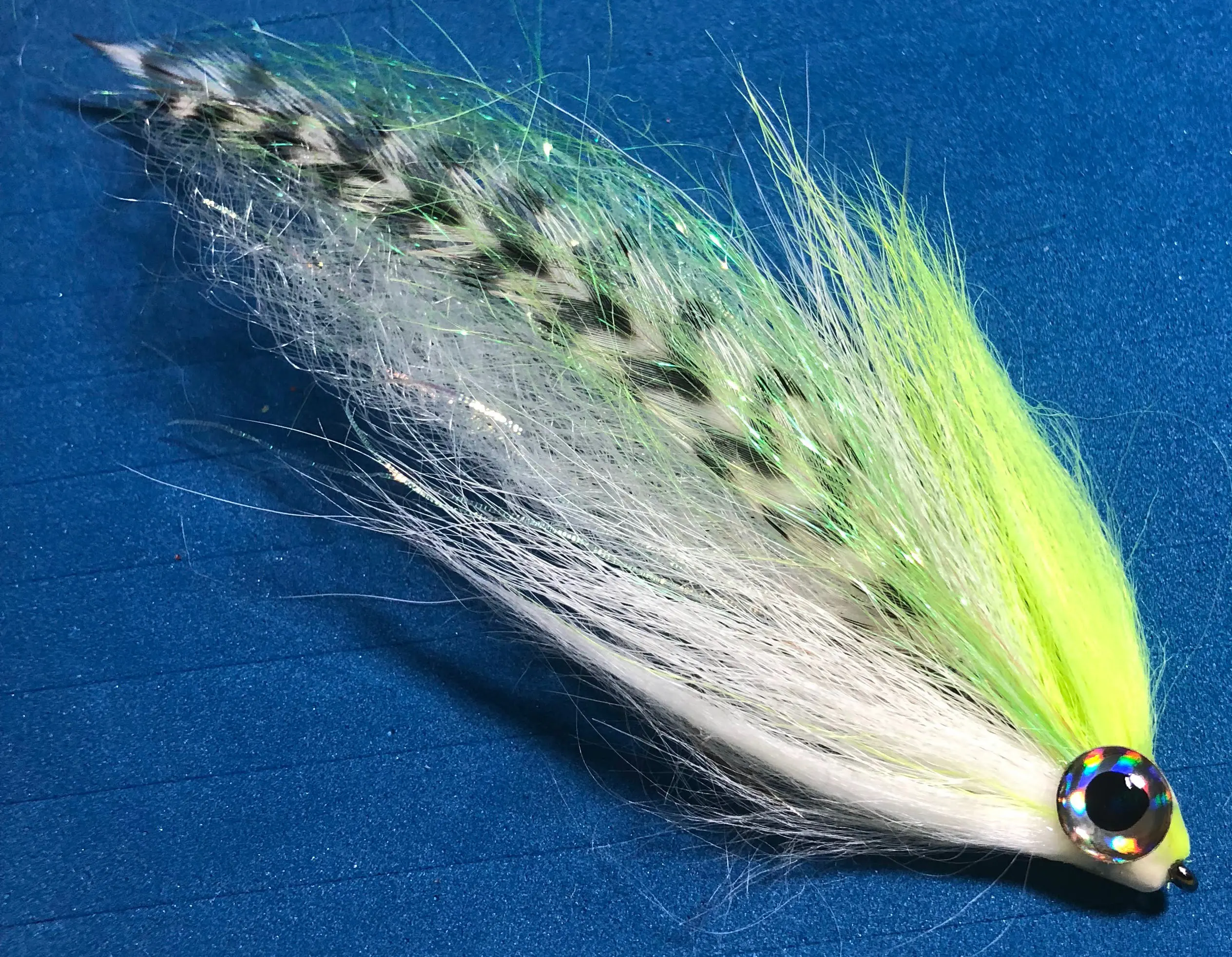
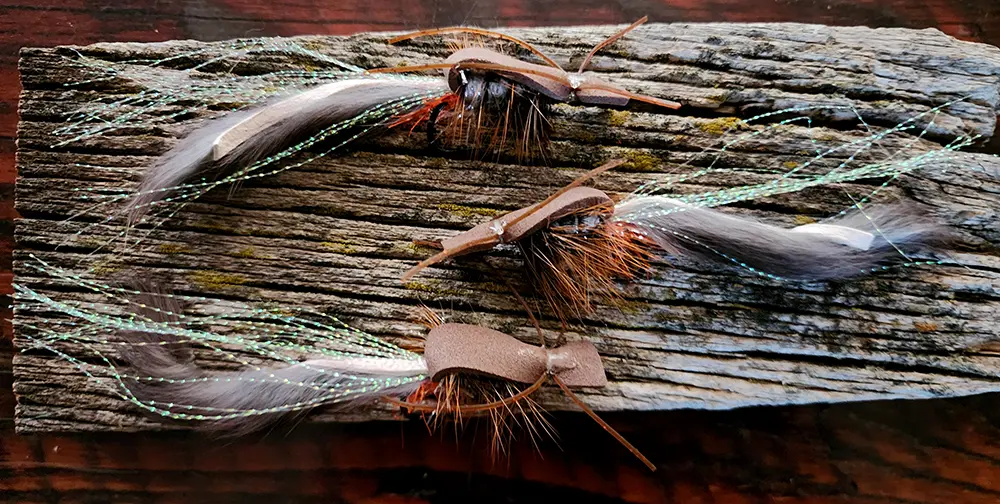
In fall, an interesting shift occurs; water temperatures drop making shallow areas more appealing again for feeding before winter sets in. Trout species often become more active during this time too, capitalizing on increased insect activity. Come winter under ice-covered lakes—yes, even in those frosty conditions—pike and walleye remain somewhat active near weed mass zones where oxygen levels are higher.
Learn more about getting started fly fishing for Pike.
This dance between shallow and deeper waters isn’t just about temperature but also about survival strategies against predators and prey availability which varies by season. Knowing when your target species is likely moving from one area to another can drastically improve your catch rate—a fact supported by countless hours spent observing these patterns firsthand on Minnesota’s diverse aquatic landscapes.
Crafting Effective Flies for Minnesota Species
Tying flies that mimic local baitfish patterns or insects could be considered both an art form and a science experiment gone wild—in the best way possible. For trout fishing enthusiasts aiming at brown trout or brook trout populations thriving within streams like Root River or Vermillion River located across southeastern parts of Minnesota including Driftless Area—an area lay claim to some pristine fly-fishing waters—the importance of matching hatch cannot be overstated.
Pike hunters venturing into northern Wisconsin’s boundary waters canoe area might opt for larger streamer flies mimicking wounded fish which prove irresistible to aggressive northerns lurking beneath surface weeds waiting for an easy meal., while bass fishermen along Mississippi River tributaries lean towards using poppers during evening bites when largemouth bass aggressively feed on surface bugs. Here’s one pattern, known as TeQueely, a hybrid creature-like fly effective across various game fish mentioned here indicating its versatility regardless of target species inhabiting different ecosystems throughout Minnesota’s rich natural resources.
Seasonal fish movements and crafting the right flies are key to successful Minnesota fly fishing. Know your fish’s seasonal patterns for better catches, and tie flies that mimic their prey for irresistible lures.
Understanding Fish Behavior in Minnesota Waters
Seasonal Movements of Game Fish
Fish behavior can seem as unpredictable as a coin toss, but seasoned anglers know that patterns emerge with the seasons. In the shallower waters during spring, bass species and pike make their appearance, seeking warmth and food after a long winter. As summer heats up, these game fish retreat to deeper water or find solace among dense weed beds to escape the heat.
In fall, an interesting shift occurs; water temperatures drop making shallow areas more appealing again for feeding before winter sets in. Trout species often become more active during this time too, capitalizing on increased insect activity. Come winter under ice-covered lakes—yes, even in those frosty conditions—pike and walleye remain somewhat active near weed mass zones where oxygen levels are higher.
This dance between shallow and deeper waters aren’t just about temperature but also about survival strategies against predators and prey availability which varies by season. Knowing when your target species is likely moving from one area to another can drastically improve your catch rate—a fact supported by countless hours spent observing these patterns firsthand on Minnesota’s diverse aquatic landscapes.
Crafting Effective Flies for Minnesota Species
Tying flies that mimic local baitfish or insects could be considered both an art form and a science experiment gone wild—in the best way possible. For trout fishing enthusiasts aiming at brown trout or brook trout populations thriving within streams like Root River or Vermillion River located across southeastern parts of Minnesota including Driftless Area—an area lay claim to some pristine fly-fishing spots—the importance of matching hatch cannot be overstated.
Pike hunters venturing into northern Wisconsin’s boundary waters canoe area might opt for larger streamer flies mimicking wounded fish which prove irresistible to aggressive northerns lurking beneath surface weeds waiting for an easy meal., while bass fishermen along Mississippi River tributaries lean towards using poppers during evening bites when largemouth bass aggressively feed on surface bugs.Here’s one pattern, known as TeQueely,a hybrid creature-like fly effective across various game fish mentioned here indicating its versatility regardless of target species inhabiting different ecosystems throughout Minnesota’s rich natural resources.
Seasonal fish movements and crafting the right flies are key to successful Minnesota fly fishing. Know your fish’s seasonal patterns for better catches, and tie flies that mimic their prey for irresistible lures.
Crafting Effective Flies for Minnesota Species
Choosing Your Fly Rod and Reel
When it comes to battling the likes of bass, trout, pike, and muskie in Minnesota’s diverse water bodies, selecting the right fly rod and reel combo is crucial. Imagine trying to take on a heavyweight boxer with nothing but your bare hands; that’s what using an ill-suited rod feels like against these game fish. A 9′ 8 weight fly rod for pike and offers versatility for bass while providing enough backbone for those surprise trophy catches. Pair it with a 8 weight large arbor fly reel for efficient line management during heated battles.
The optimal setup isn’t complete without considering your line. For slicing through wind or reaching into deeper waters where monsters lurk, you’ll want a weight forward fly line complemented by either a sink tip and fluorocarbon leader. Fish a floating fly line for poppers and close to the surface prey. This allows flies to dive deep quickly – because let’s face it: no self-respecting largemouth wants its dinner served sky-high. Just fly fishing for bass I prefer a 9′ 6″ 7 weight Prestige Fly Rod, It would also handle northern Pike as well.
Tippet strength can make or break (literally) your fishing day out on the mighty Mississippi River or within the tranquil confines of Boundary Waters Canoe Area Wilderness Minnesota Fishing Regulations. Going heavier at 10-20lb may seem overkill until you hook into that once-in-a-lifetime muskie that decides today’s not the day he gets caught.
The Right Fly Line and Tippet Selection
Making sure you’ve got the correct fly line and tippet is akin to choosing arrows before heading into battle – select wisely based on conditions awaiting in places like Root River or Vermillion River renowned among DIY spots across this great state. Weight-forward lines are generally preferred as they help cast larger flies necessary when targeting northern species including hefty pikes lurking amidst weed masses.
In areas known for their clear waters, such as the designated trout streams flowing through the Driftless Area’s untouched landscapes, presentation becomes key. Thus, you’ll have to opt for finer tippets that make your flies seem like indigenous meals instead of foreign invaders, avoiding the risk of startling the cautious quarry. The Great Lakes Fly Fish TeQueely Streamer is a prime example of what works well in these pristine environments.
Navigating Fishing Regulations in Minnesota
Minnesota, the land of 10,000 lakes (and then some), offers an angler’s paradise with its vast array of fish species and scenic fishing spots. But before you cast your line into these pristine waters, there’s a small mountain of regulations to tackle.
Fishing Licenses: Your Ticket to the Great Outdoors
To start off on the right foot—or dock—you’ll need a valid fishing license. Embarking on a journey through Minnesota’s waterways, your fishing license acts as the key to unlock worlds ranging from tranquil trout realms to lively arenas where northern pike reign supreme. Whether you’re a local or just visiting, make sure this is at the top of your checklist. To gear up for your upcoming escapade, swing by the Minnesota Department of Natural Resources’ website and dive into their fishing section for all the nitty-gritty on securing your license.
Remember that certain areas might require additional permits or have specific rules—especially places as unique as the Boundary Waters Canoe Area Wilderness. Don’t let ignorance be your excuse when a ranger asks for your paperwork.
Seasons and Limits: The Balancing Act
Understanding and honoring the timeframes and quotas for fishing are crucial in preserving Minnesota’s dynamic natural habitats, guaranteeing that abundant fish populations remain for coming generations (and anglers). Each species has its own calendar; walleye season isn’t muskie season. Similarly, bag limits can vary significantly depending on where you’re casting off.
The idea here isn’t just about conservation; it also enhances everyone’s experience by preventing overfishing in popular spots like those along the mighty Mississippi River or within remote reaches such as those found in northern Wisconsin forests.
Knots and Tangles: Navigating Specific Regulations
Beyond general rules lie intricate layers concerning types of bait allowed (live vs artificial), hook sizes (because yes, size matters), and even boat launch protocols at various lakes across state lines near county roads leading into metro areas full of eager anglers looking to lay claim to their secret spot.
Staying informed means checking updates regularly because what was permissible last year may now be restricted due to changes in environmental conditions or fish populations—a quick visit back to our friends at the DNR website will keep you out of hot water…figuratively speaking.
Minnesota Fly Fishing Tip:
Before hitting Minnesota’s waters, grab your fishing license and brush up on local regulations like seasons, limits, and bait rules to protect the ecosystem and ensure a great experience.
Fishing Techniques That Work Best in Minnesota Waters
Mastering the Art of Moving Water
In the heart of Minnesota, where rivers flow like liquid sapphires and lakes shimmer under the sun, mastering moving water is key. If you’re on the hunt for a hefty muskie or an energetic largemouth bass, grasping the art of maneuvering through these vibrant waters could be your ticket to success. One effective technique involves casting upstream and letting your fly drift down naturally with the current—a tactic that often proves irresistible to fighting fish lurking below.
But here’s a twist: don’t just focus on any stretch of river. Aim for spots where the flow carves out natural chow halls, like whirlpools behind boulders or curves in the river. This strategy requires precision and patience but payoffs are epic battles with some of Minnesota’s most sought-after game fish.
Tackling Lakes With Tactical Precision
Lakes in Minnesota aren’t just scenic backdrops; they’re arenas where anglers go toe-to-fin with some serious aquatic contenders. Here’s where strategic depth control comes into play—especially when targeting species like northern pike that patrol both shallow weed beds and deeper waters depending on their mood swings (yes, fish have moods too.). A good fly line choice could be weight forward lines equipped with sink tips or polyleaders for reaching those moody pikes hanging out in deeper zones.
A nifty trick is to keep an eye out for surface disturbances indicating active feeding—then cast beyond this area and retrieve through it. Remember, confidence in your lure presentation translates directly into success rates so always keep experimenting until you find what works best in each scenario.
The Secret Weapon: Seasonal Strategies
Minnesota’s weather patterns are about as predictable as winning lottery numbers—which means adapting your techniques seasonally isn’t just smart; it’s essential. During spring thaw periods when water temperatures rise slightly above freezing point (just enough not to numb your fingers), trout become more active near shallows chasing after newly hatched insects making dry flies particularly deadly weapons against unsuspecting trout populations. TeQueely streamers, for example, could turn an otherwise slow day into one filled with thrilling chases across sparkling streams. But come winter? It’s time to switch gears towards ice fishing tactics which involve jigging small nymphs through holes drilled over lake surfaces—an entirely different yet equally rewarding endeavor if done right. So whatever Mother Nature throws at you, having versatile strategies up sleeve ensures year-round angling adventures await within mighty Minnesotan landscapes.
Minnesota Fly Fishing Tip:
Master moving water by casting upstream in Minnesota’s rivers and targeting natural feeding zones for epic battles. In lakes, use strategic depth control with the right fly line to lure moody pikes. Adapt your techniques with the seasons—dry flies in spring thaw and ice fishing tactics in winter—for year-round angling success.
The Role of Weather Patterns on Fishing Success
Believe it or not, the mood swings of fish are almost as predictable as weather patterns – and yes, there’s a connection between the two. When you understand how lakes and rivers respond to Mother Nature’s temper tantrums, you’re one step closer to reeling in that trophy catch.
Lakes Rivers: The Weather Connection
First off, let’s talk about how weather affects your favorite fishing holes. Sunny days might be great for picnics but can make fish dive deeper into cooler waters, making them harder to hook. On the flip side, overcast skies often keep fish near the surface feeding longer throughout the day – prime time for fly fishing. This doesn’t mean you should only hit up the Great Lakes Fly Fish Shop when clouds roll in; rather, it means every type of weather offers unique opportunities if you know what to look for.
Rainfall plays its part too by increasing water flow and oxygen levels in streams and rivers which can lead these slippery creatures right into your path. However, after heavy rains causing floods? That might just scatter your finned friends far from their usual haunts due to sediment disturbance.
Cold fronts bring changes as well; they typically slow down fish metabolism making them less aggressive towards baits or flies. Yet this is exactly when knowledge about local species behavior becomes invaluable – because even sluggish fish will eat if tempted with just the right lure under these conditions.
Making Weather Work For You
To truly harness weather patterns for successful angling adventures across Minnesota’s diverse aquatic landscapes requires more than luck; it demands strategy based on understanding seasonal movements tied directly back to temperature fluctuations through shallow water versus deeper water habitats.
Fish like bass seek out warm shallows during spring spawning season while pike retreat into weedy sanctuaries come summer heatwaves—knowing where they migrate lets anglers target specific spots effectively regardless of sunny spells or looming storm clouds overhead.
In essence: pay attention not just at what’s biting but why certain species behave differently under varying atmospheric pressures and temperatures—and use this insight alongside tools like polarized sunglasses (for spotting those sneaky shadows beneath waves) plus a trusty drift boat allowing access deep within weed beds no shore-bound angler could hope reach alone. Here’s a video explaining further how best utilize gear depending on whether.
Weather isn’t just small talk; it’s a big deal for fishing. Sunny, rainy, or cold – each weather pattern shifts fish behavior and where you’ll find them biting. Know these changes to up your game and land that trophy catch with the right gear and strategy.
Tackling Different Water Bodies Across Seasons
Fly fishing in Minnesota is like a box of chocolates; you never know what you’re gonna get, but it’s all delicious. From the serene boundary waters canoe area to the mighty Mississippi River, each spot has its charm and challenges.
Spring into Action on Rivers and Tributaries
With the arrival of spring, melting snow rejuvenates our cherished angling locales as rivers begin to expand. The trick here? Understanding how fish react to changing conditions. For instance, as water temperatures rise in rivers tributary areas, trout begin their migration upstream. Now’s the chance for fishing enthusiasts who’ve done their homework on top-notch fly designs, like TeQueely or Wooly Bugger, to really shine as these lures imitate the natural food that gets dislodged in turbulent waters.
Moving onto larger bodies like the Boundary Waters Canoe Area during late spring can also yield fantastic results for those seeking solitude alongside their sport. Here’s where your choice of gear makes a huge difference – imagine battling a hefty northern pike with nothing but your wits and a 9′ 8wt fly rod recommended for bass.
Summertime: Lakes Galore
Come summer; lakes become hotspots (literally) for game fish activity. Warm surface temperatures drive bass species towards cooler depths or shaded weed beds making them harder to catch but not impossible. Techniques shift from aggressive casting to more strategic placements using weight forward fly lines that allow deeper access without spooking your target.
Lake trout and smallmouth bass especially love hanging around deep structures or sudden drop-offs where they can ambush prey effortlessly—a perfect scenario if you’ve got polarized sunglasses to help spot these sneaky critters beneath the surface.
Fall: A Cornucopia of Fly Fishing Opportunities
Ah, fall—the season when trees don vibrant hues and waterways teem with eager fish bulking up for winter. In Minnesota’s myriad streams flowing into the Mississippi River tributary system lay claim by seasoned anglers looking to outsmart brown trout on their spawning runs—using heavier tippet material between 10-20lb helps ensure these robust fighters don’t break free easily once hooked.
The cooler weather also brings muskie closer inland offering thrilling encounters that test both skillset & patience alike; remember though respect local regulations accessible via Minnesota DNR’s website, ensuring sustainable practices are followed throughout this exhilarating season.
Fly fishing in Minnesota offers diverse challenges across seasons, from mastering fly patterns for spring trout migrations to strategizing deep-water bass tactics in summer and targeting robust brown trout and muskie in fall. Gear up, respect the rules, and embrace each season’s unique adventure.
Getting Started with Fly Fishing In Twin Cities
If you’re itching to cast a line without escaping the urban sprawl, Minneapolis-St. Paul is your unexpected fly fishing haven. Yes, you read that right—the Twin Cities are not just about malls and music scenes; they’re also a gateway to some surprisingly good fly fishing spots where bass, trout, pike, and even muskie call home.
Choosing Your Fly Rod and Fly Reel
Before you dash off to Cenaiko Lake or any other local water body teeming with game fish, let’s talk gear. The rule of thumb for Minnesota waters? Go for versatility. A 9′ 8wt fly rod is ideal for tackling both feisty smallmouth bass in the Mississippi River and Pike. A 9′ 10 weight saltwater fly rod for those elusive muskies lurking in deeper waters. Pair it with a 10 weight large arbor reel for smooth retrieval during those heart-stopping moments when the big one decides to run.
The importance of matching your fly line and tippet can’t be overstated either—a weight forward fly line equipped with a sink tip or fluorocarbon leader will serve well across most situations Minnesota throws at you. And when targeting toothy critters like northern pike or muscular adversaries such as largemouth bass, beefing up your tippet strength to 10-20lb is wise advice.
Navigating Fishing Regulations in Minnesota
A great day on the water starts with knowing what’s allowed—and what’s not. To keep our beloved fisheries thriving (and avoid unpleasant chats with conservation officers), familiarize yourself with current regulations by visiting Minnesota DNR’s official site. This comprehensive guide spans the spectrum from restrictions on how many fish you can reel in to unique regulations tailored for various waterways throughout the state.
Maintaining sustainable practices isn’t just responsible angling—it ensures future generations get their chance at feeling that tug on the line too.
Fishing Techniques That Work Best in Minnesota Waters
No two lakes—or rivers—are alike here; understanding how moving water affects fish behavior could very well make or break your day out chasing trophies around Minneapolis-St.Paul. From mastering slow retrieves amidst weed beds in search of lurking largemouths during summer months to perfecting high-speed streamer tactics aimed at aggressive springtime pikes—each technique requires patience and practice but pays dividends once mastered. And if fighting fish hand-to-hand gets old (said no one ever), remember: every cast into these mighty Minnesotan waters weaves another thread into the rich tapestry of our shared outdoor heritage.
Minneapolis-St. Paul isn’t just urban vibes; it’s a fly fishing gem for bass, trout, pike, and muskie. Gear up with a versatile 9′ 8wt fly rod and fly reel set up to handle most local waters. If muskie are the target a 9′ 10 wt. fly rod is the correct tool. Stay savvy with Minnesota’s fishing rules to keep the sport thriving for future generations.
Maintaining Your Gear For Longevity
Let’s face it, fly fishing gear isn’t cheap. But with the right TLC, your investment can last through countless casts and catches. Grasping the nuances of maintaining and mending your fly fishing tools, regardless if you’re a veteran or just dipping your toes in the water, is crucial for their longevity.
Choosing The Right Cleaning Methods
Cleaning your gear might seem like a no-brainer—just rinse and repeat, right? Wrong. There’s an art to it. Start by gently removing dirt from your rod with soapy water and a soft cloth. As for those polarized sunglasses that let you spot fish like an eagle scouting prey? Wipe them down with lens cleaner and a microfiber cloth after every trip. This prevents scratches that can make spotting harder than finding a needle in a haystack.
Don’t forget about your line either. It deserves more than just any old wash-up; cleaning it properly enhances its lifespan dramatically—think of it as anti-aging cream for your fly line. Use specifically designed cleaners followed by dressings that not only clean but also lubricate the line for smoother casts.
The Art of Storing Your Fly Fishing Arsenal
If you treat storing your gear as carefully as planning where to cast next on the mighty Mississippi River or Boundary Waters Canoe Area Wilderness could significantly extend its service life.. Keep rods out of direct sunlight when not in use because UV rays are pretty much kryptonite for them. And always remember: loose reels lead to lost opportunities—or worse yet, damaged gears—so keep those bad boys snugly attached but without tension while stored away safely.
Fly lines tend to have their own set of diva demands too—they prefer being stored loosely coiled rather than tightly wound up which stresses them out (relatable). Oh. And never store wet flies directly into boxes unless moldy surprises sound appealing somehow?
A Stitch In Time Saves Nine: Minor Repairs
We’ve all been there—a small snag turns into a gaping hole faster than you can say “fish on”. Regular inspections help catch issues early before they escalate into expensive repairs or replacements.. Got some fraying happening? Some careful trimming may be all that’s needed., Seize control over runaway damage by keeping basic repair kits handy—you’d be surprised what dental floss can fix.
Last tip: when disaster strikes beyond DIY fixes find reputable professionals who specialize in fishing equipment repairs,. They’ll get you back casting quicker than saying ‘drift boat’ backwards ten times fast (don’t try this at home).
Maintain your fly fishing gear with proper cleaning, smart storage, and timely repairs to ensure it lasts longer. Treat each piece of equipment with care – clean gently, store wisely away from harm, and tackle minor damages quickly. This approach not only saves money but keeps you casting smoothly.
FAQs in Relation to DIY Minnesota Fly Fishing Bass Trout Pike Muskie
Can you catch muskie on a fly rod?
Absolutely. With the right gear and technique, targeting muskie with a fly rod can lead to some thrilling catches.
What are the best flies for Minnesota Lakes?
In Minnesota lakes, top picks include streamers like Tequeelys and Clouser Minnows that mimic local baitfish.
Is fly fishing good for pike?
Pike love flies. Using large, flashy patterns in shallow waters can be super effective for hooking these aggressive predators.
How do you fly fish small creeks for trout?
Finesse is key. Opt for smaller dry flies or nymphs and cast upstream to stay undetected by wary creek trout.
Conclusion of Minnesota Fly Fishing
Embarking on DIY Minnesota Fly Fishing for bass, trout, pike, and muskie adventure? You’re now equipped. Gear up right, from rods to flies, for those elusive game fish.
Conclusion of Minnesota Fly Fishing
Embarking on DIY Minnesota Fly Fishing for bass, trout, pike, and muskie adventure? You’re now equipped. Gear up right, from rods to flies, for those elusive game fish.
Dive into the best spots. Remember the Driftless Area’s untouched waters and the mighty Mississippi’s diverse species.
Understand your prey. Seasonal movements dictate tactics; adapt and succeed.
Craft with care. The right fly turns a chase into a catch in Minnesota’s varied habitats.
Stay informed on regulations; sustainable fishing ensures adventures for years to come.
Tossing your line into the water is just the beginning; it’s also about devising a plan, getting to know the wilderness, and valuing what it offers. Your next trip could be your best yet—make every cast count.
From Muskie to Trophy Brook Trout
How about a Livingston Spring Creek, or that Trout Brookie from Fortress Lake a true wilderness experience

